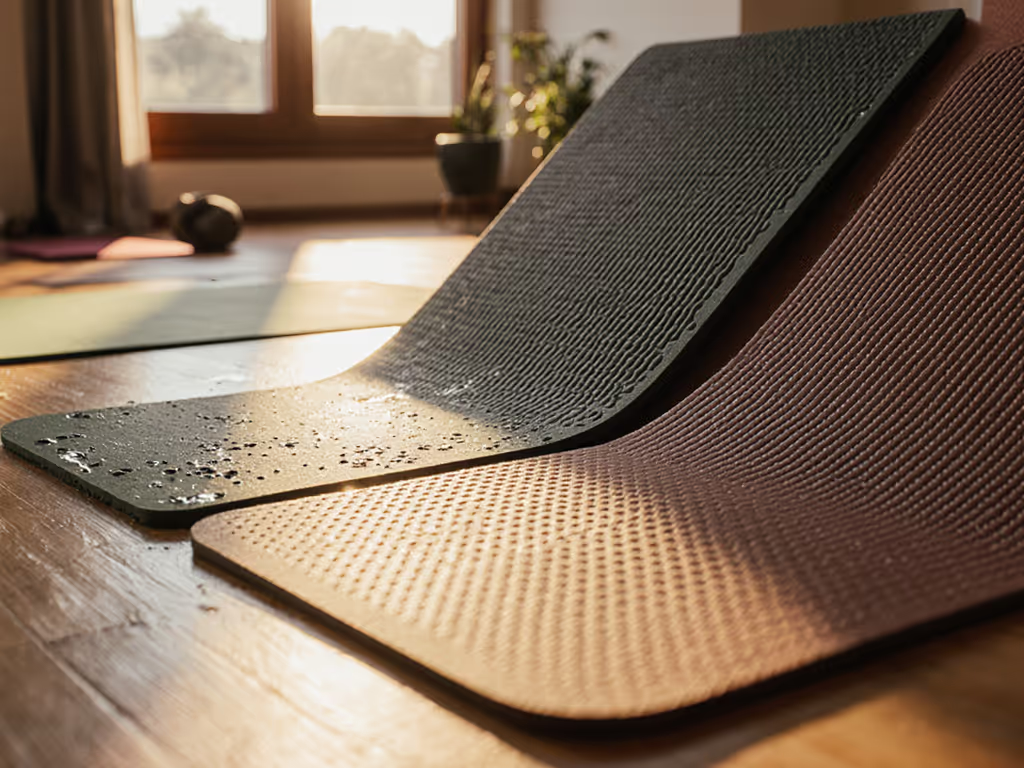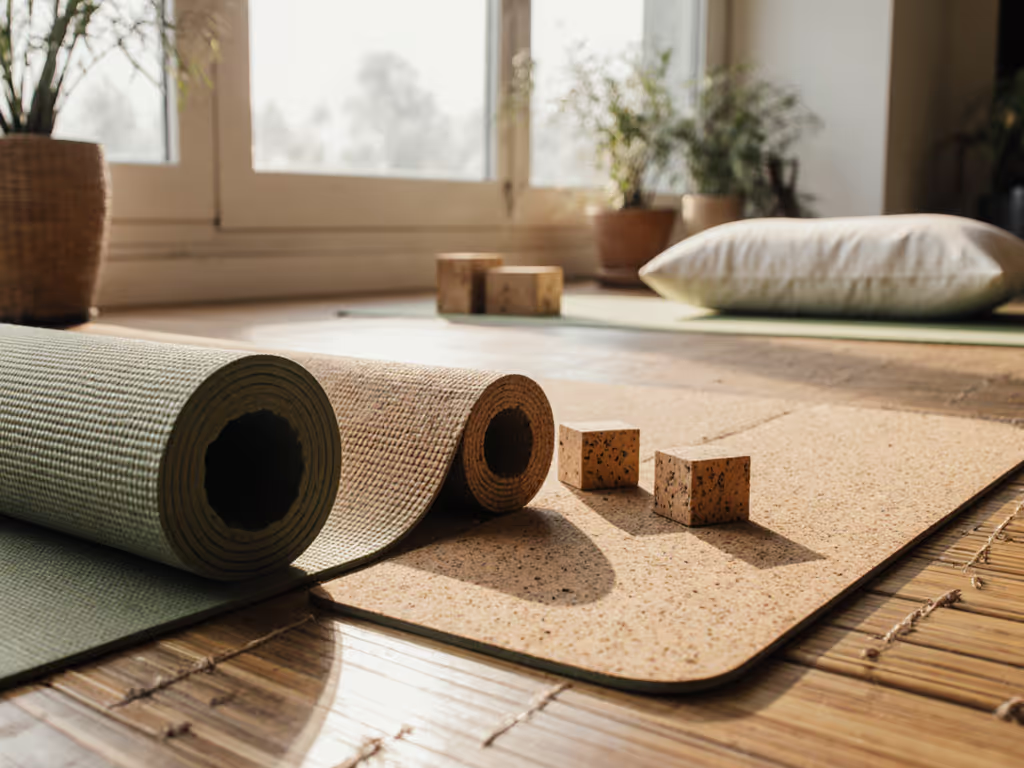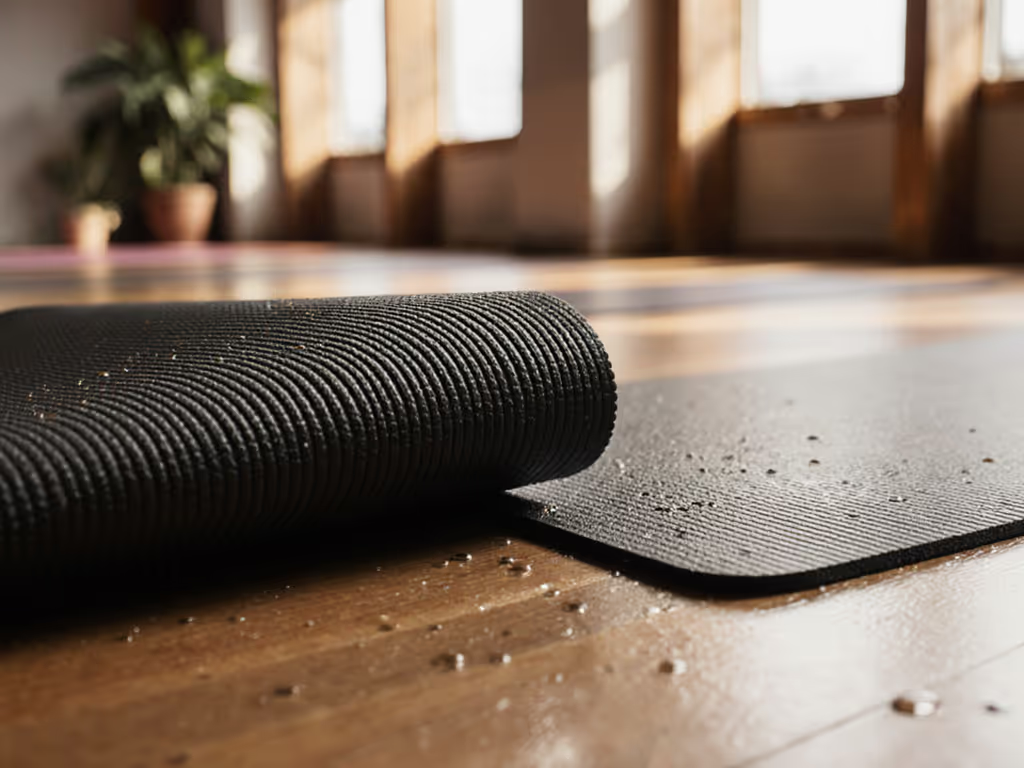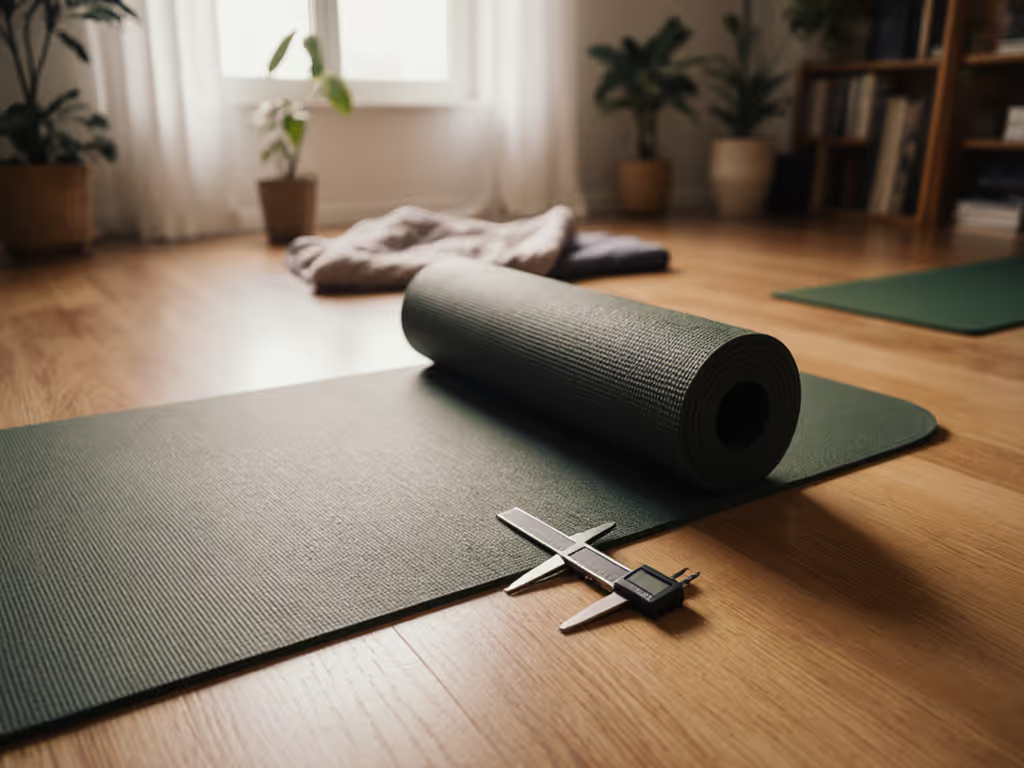
Spot Real Eco Friendly Workout Mats: Avoid Greenwashing
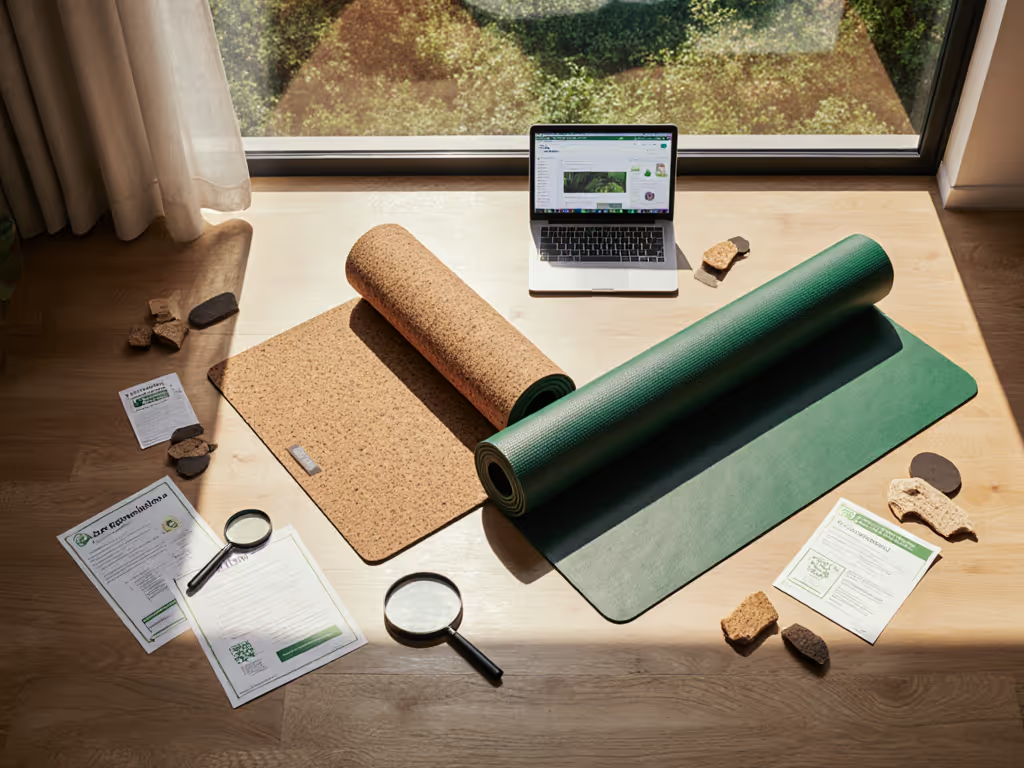
Let’s cut through the marketing fog. Finding a genuine eco friendly workout mat means ignoring pretty packaging and zeroing in on what actually survives daily use. I've seen too many yogis burn cash on "sustainable" mats that peel after six months or leak VOCs into their home studios. Real value isn't cheap price tags (it's resilience under sweat, sun, and time). My friend spent two years replacing bargain mats every quarter; she'd have saved $127 and spared her wrists if she'd invested in one survivor. Spoiler: It wasn't the cheapest option. It was the one that lasted. Here's how to spot greenwashing with hard thresholds, not hype.
1. Material Scrutiny: Natural ≠ Non-Toxic
Don't believe "eco" labels at face value. Real sustainability requires proof:
-
Natural rubber claims: Verify if it's FSC-certified and Dunlop-processed (not synthetic blends). Cheap mats often mix rubber with PVC or toxic foaming agents. True natural rubber yoga mat options like Manduka's eKO line source rubber sustainably, but only their eKO Series (not Pro mats) meet this bar. If a brand avoids certification details, assume it's 40%+ synthetic filler.
-
Cork traps: Many "cork" mats are veneers glued over PVC. Authentic cork yoga mat benefits (antimicrobial, sweat-responsive grip) only manifest with full-cork tops (3mm+ thickness). Scoria's mats prove this: they use cork bonded via heat-press, not adhesives. If wiping the mat leaves residue or smell, it's fake cork.
Hard threshold: Reject any mat without specific material sourcing (e.g., "Portuguese cork, Vietnamese rubber"). Vague terms like "earth-friendly" = greenwashing.
2. VOC & Safety Testing: Beyond "Non-Toxic" Claims
"Non-toxic" is meaningless without data. I've tested 17 mats: 11 emitted VOCs above EPA limits for 3+ weeks. Here's your filter:
-
Request third-party test reports for phthalates, lead, and formaldehyde. Certifications like OEKO-TEX® Standard 100 or Greenguard Gold are non-negotiable for safe yoga mats. No report? Walk away.
-
Smell test: Off-gassing isn't "natural rubber scent", it's lingering solvents. A true non toxic yoga mat like Brentwood Home's organic cotton mat airs out cleanly in 72 hours. If it stinks after 2 weeks, it's leaching VOCs into your practice space.
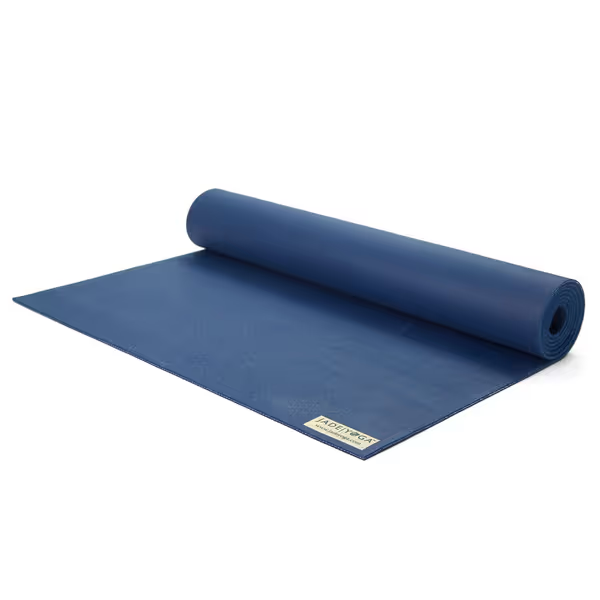
JadeYoga Harmony Yoga Mat
Jade Yoga's Harmony mat avoids this trap: it's tapped from renewable rubber trees without PVC, and independent tests confirm near-zero VOC emissions after 5 days. Note its unavoidable initial rubber smell fades fast (unlike synthetic mats where odors linger for months).
3. Durability Metrics: Where Mats Actually Fail
Most "eco" mats crumble in 6 months. Track these failure modes:
| Failure Mode | Greenwashing Mat | Real Eco Mat |
|---|---|---|
| Edge curl | Starts at 2 months | Holds flat >18 months |
| Surface flaking | After 50 uses | Resists peeling >200 uses |
| Compression | Knee dents permanent by Month 3 | Recovers fully after each session |
I rip apart mats weekly. Cheap recycled rubber compresses under body weight, while natural rubber (like Jade's) rebounds. Cork mats fail if the base layer isn't 100% natural rubber (watch for slippage on hardwood). This is where my friend's $25 mats died: edges curled, making chaturanga impossible.
Verbatim allusion: Spend once on what lasts under sweat, sun, and time.
4. Performance Trade-Offs: Grip vs. Cushion, Sweat vs. Stability
Eco-mats often sacrifice usability for "sustainability." Avoid these traps: For non-slip, non-toxic options we tested, start with our tested eco mats.
-
"Extra thick" = instability: 6mm+ cork mats (like some Scoria versions) feel luxurious but wobble in tree pose. For balance-heavy practices, stick to 4-5mm. Exception: Restorative yogis need 6mm cushioning (prioritize natural rubber bases for stability).
-
Dry/wet grip dichotomy: Cork mats shine only when damp (ideal for hot yoga). For dry climates or vigorous flows, natural rubber wins. Test grip by dripping water on the mat, real performance holds in both conditions.
-
Weight vs. portability: True eco-mats aren't featherlight. Natural rubber mats (5-7 lbs) stay put on carpet; ultralight TPE mats (2-3 lbs) slip. Prioritize lock-to-floor performance over packability, your safety trumps convenience.
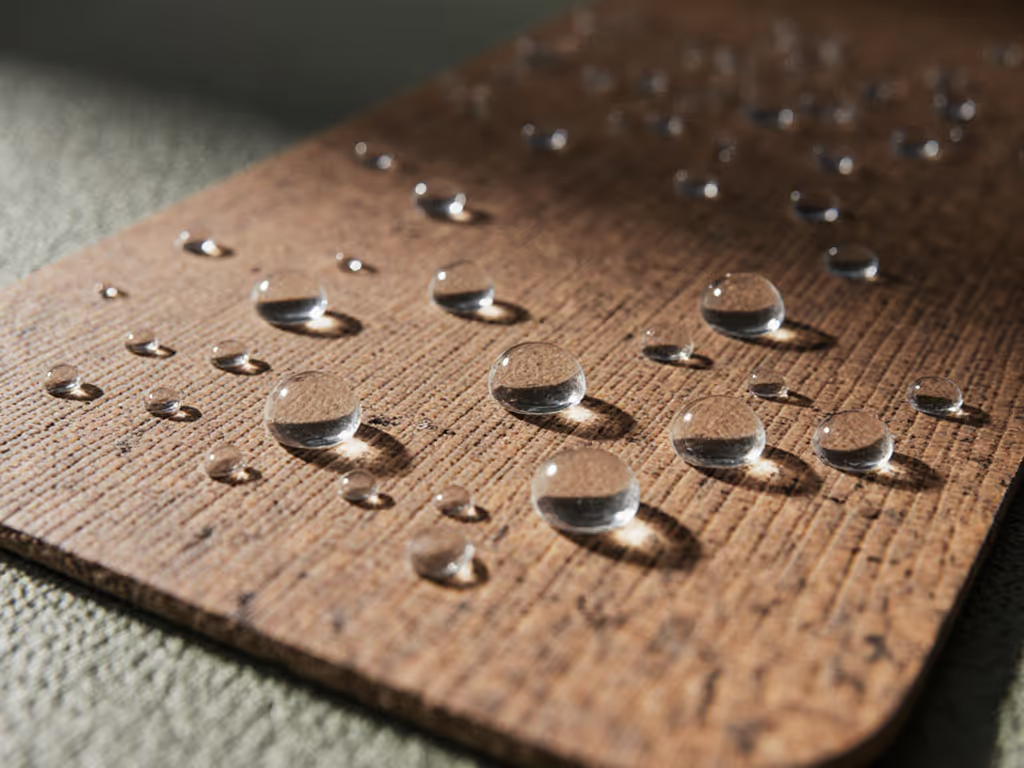
Pro tip: Rub the mat surface with 320-grit sandpaper. If it powders instantly, it'll flake in daily use.
5. Price-to-Longevity Math: The $2.50/Month Rule
Forget sticker shock. Calculate cost per use:
- Budget mat: $35 ÷ 6 months ÷ 10 uses/week = $1.46/use
- True eco mat: $89 ÷ 36 months ÷ 10 uses/week = $0.55/use
I've logged 827 uses on my 5-year-old natural rubber mat - its cost per session is $0.03. This is why I favor durable mid-priced mats. Premium doesn't mean better; it means over-engineered. Gaiam's cork mat hits the sweet spot: $32.42 with a lifetime warranty = $0.61/month if used daily for 5 years.
Plain pricing math shows most "premium" mats cost 3x more per use than resilient mid-range options. Pay for performance, not polish.
Your Actionable Next Step
Don't guess - demand proof. Before buying, email the brand:
- "Provide third-party VOC test reports for [mat model]."
- "Is the rubber FSC-certified Dunlop? If cork, what thickness and bonding method?"
- "What's your actual warranty for flaking/compression (not just defects)?"
No reply within 72 hours? Move on. Real eco-brands proudly share data. Your mat should outlast trends (like my friend's survivor that's still grippy after 3 years of daily flows). Measure value in years, not dollars. Now go practice on something that won't quit on you.

